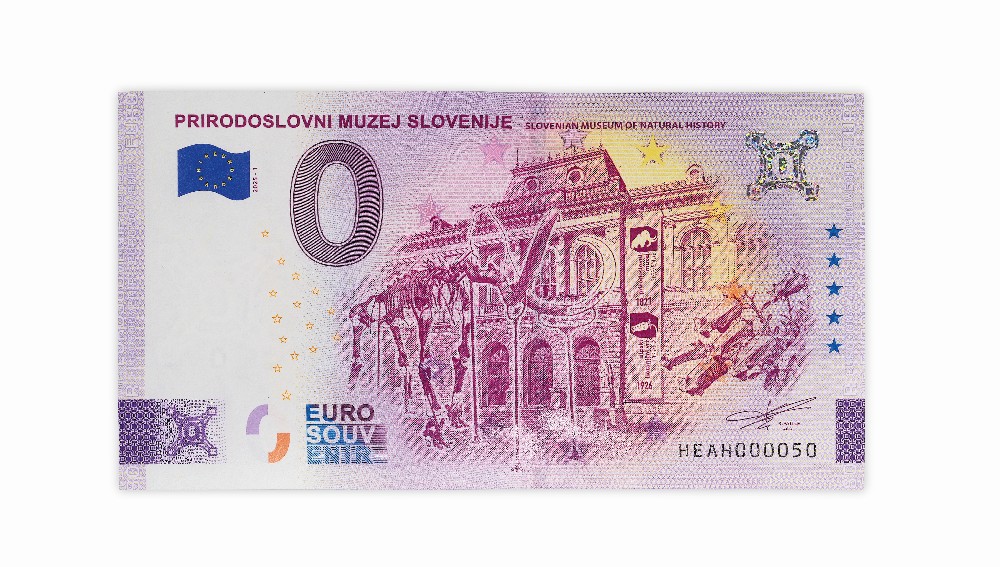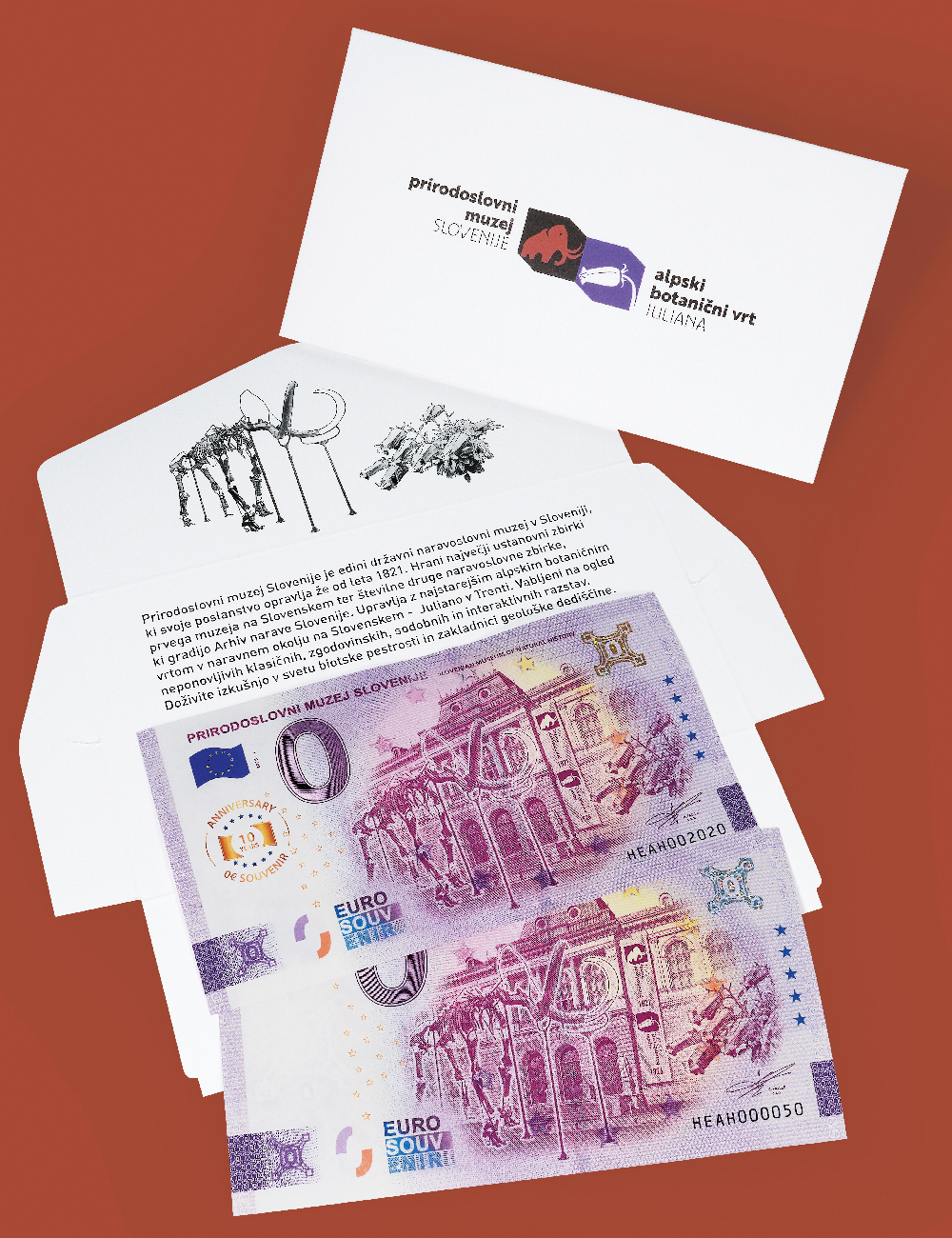Description
On the occasion of the 140th anniversary of the beginning of the construction of the central museum building in Slovenia, a special commemorative and collectible numismatic item – a commemorative banknote – has been issued in tribute to the only natural history museum in Slovenia. Although the banknote closely resembles a real euro banknote at first glance, it is not legal tender. Its size is almost identical to that of the 20-euro note, while its purple color is reminiscent of the 500-euro note. It is also printed on cotton paper at the same printing house (Oberthur Fiduciaire in France) and features all the security elements of a genuine euro banknote. Commemorative banknotes are extremely popular among collectors across Europe and also in Slovenia. Its value may even increase over time, as it is printed in a limited edition of only 3,000 pieces. The banknote features a collage of three elements, combined into a stylistically unified design by renowned designer Matjaž Učakar. The first element is the 140-year-old Neo-Renaissance museum building, a symbol of the history of our cultural heritage. It is the first building in Slovenia constructed solely for cultural purposes. Today, under one roof, it houses both the Slovenian Museum of Natural History and the National Museum of Slovenia. The second element is the mammoth skeleton found in Nevlje near Kamnik, a symbol and recognizable emblem of the Slovenian Museum of Natural History.The third element is Zois’s bellflower (Campanula zoysii), a rare flower that grows only in the southeastern limestone Alps and symbolizes the Alpine Botanical Garden Juliana in Trenta, which is managed by the Slovenian Museum of Natural History. This is the oldest alpine botanical garden in Slovenia, and next year it will celebrate its 100th anniversary.




